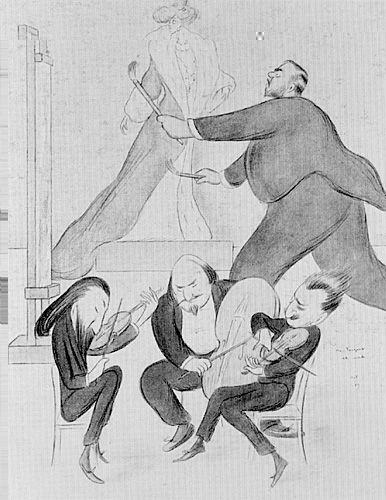In addition to being a brilliant wit, humorist, and dandy, Max Beerbohm was one of the preeminent caricaturists of his day. His style was original and somehow inherently funny down to its lines and shapes. Below are a few of his caricatures from around the web:
Oscar Wilde:
Aubrey Beardsley:
One of Beerbohm's favorite targets was the Pre-Raphaelite group. Here is Swinburne reading to the Rosetti Brothers:
And a group caricature of the Rosetti Circle:
John Singer Sargent painting:
Here is a self-caricature of Max:
And a few photos of him, young and old:









